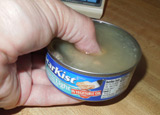How Much is Inside A Shopping Cart full of Aluminum Cans?
How many cans could one of those carts hold? And what would those cans be worth at the recycling center?
By Rob Cockerham |
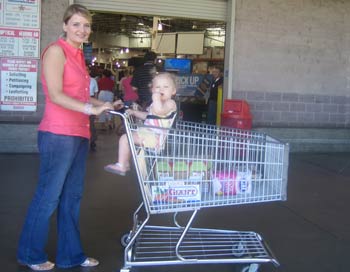
Shopping carts are one of the simplest forms of herd robot.
A single store can support a huge corral of shopping carts in a vibrant, active community. The shopping carts from a large store can make many, many migrations through the store each day, or rest outside within bounds of the parking lot, socializing and nesting with other carts.
As new carts approach mating age, they will spend more of their days roaming the perimeter of the parking lot, away from the other carts, far from safety. Sometimes they are maimed or destroyed by delivery trucks.
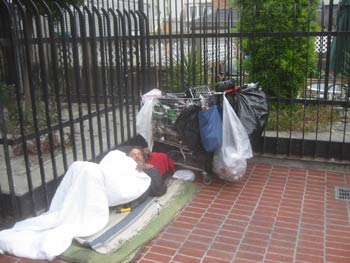 More often, they are removed from the lot by homeless people.
More often, they are removed from the lot by homeless people.
That is when the carts begin their "mission", or "vision quest".
Homeless people use shopping carts to collect and transport recyclable material. The urban garbagescape contains a rich vein of harvestable aluminum, glass and used Chinese food. Homeless people live close to the earth, so I had always assumed that they were collecting these recyclables to help preserve the environment.
Recently, that belief was shattered! I heard on Fox News that homeless people collect bottles and cans for money, and that they use that money toward the satisfaction of their own free will.
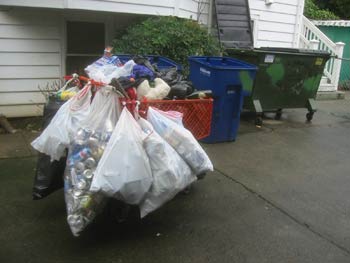
Could it be true? Could collecting cans in a shopping cart generate a significant income? How many cans could one of those carts hold? And what would those cans be worth at the recycling center? On Saturday morning, we decided to find out.

The first step was to collect a whole bunch of aluminum cans.
Luckily, I love soda. I looooooove soda. The citizens of downtown Sacramento also love soda. They looooove soda. On the other hand, they are not overly fond of expired milk, or the crusts on Round Table Ulti-Meat Pizza.
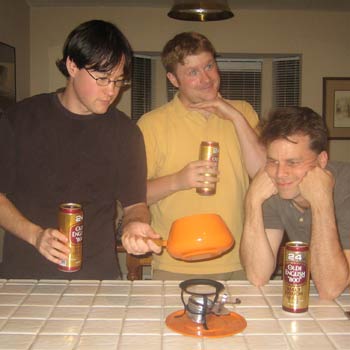
I also put the word out, I needed cans. Lots of empty cans.
Soon, cans were an integral part of my everyday life. I drank out of cans for breakfast, I drank out of cans for lunch, I drank out of cans for dinner. I can't even tell you how many cans I drank. To be honest, I can't remember much of anything from fondue night.
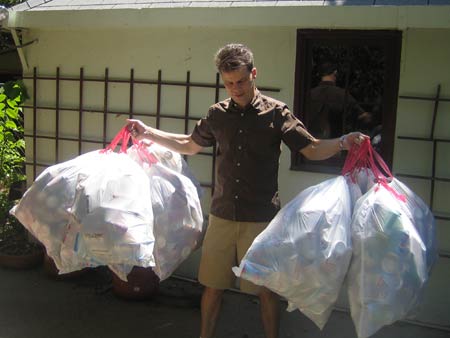
In seven short months, Eric, Nick and I had scrounged up a fat bounty of aluminum cans.
We were ready. Wait, we needed a shopping cart.

Most newer plastic shopping carts in Sacramento are manufactured by the Rehrig Pacific Company. If you know where to look for their logo, you can spot this breed at Home Depot, Food4Less, Albertson's, Safeway... everywhere.
It was a Rehrig Vista, which a company representative described as holding 10,100 cubic inches.
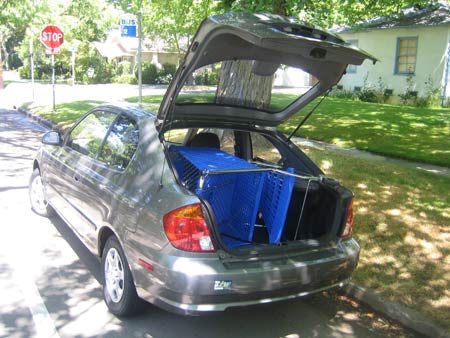
This one was female.
Rehrig invented the ubiquitous plastic milk crate, and went on to create these awesome plastic shopping carts. The innovative Rehrig Pacific corporation is constantly striving to build the products that future consumers will steal.
In minutes, we were back at my home, ready to fill the cart with cans. First, we'd try uncrushed. 
We tore open four bags of cans and counted 256 uncrushed cans into the cart. 256 is a loose-packed fill to the top edge. This is known as "grain-capacity" in the shopping cart business. We could have fit a few more, if we had stacked them carefully and evenly, using the latest configurations in the U.C.S.B. beeramid engineering database.

Already, we were making startling scientific discoveries: One can carry more beer with a shopping cart full of cans than with a keg-in-a-kart.
256 beer cans:
24 gallons
keg-in-a-kart:
15½ gallons

An average can weighed 13.3 grams.
MM! Just looking at these pictures makes me thirsty for soda! I love soda!
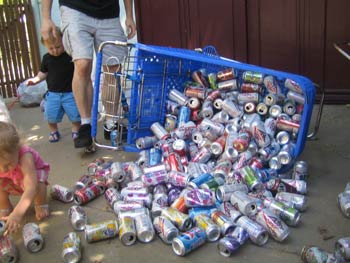
Next, we dumped out the cans and started crushing. I figured we would be able to fit 2-3 times as many cans into the cart if they were crushed flat.
My neighbors probably hated this. This was louder than the car rolling over.
If my neighbors had called my landlord again maybe I'd have been in trouble. Maybe this experiment would be a prelude to actual homelessness.

"Iron hands" Eric smashed them. Nick "Leadfoot" crushed them, and I, Rob "The Crinkler" Cockerham mashed them!
Our infant children, "Thirsty" Jonas and "Crazy legs" June also helped.


